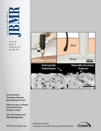A paper suggesting that exposure to sunlight might help prevent hip fractures in the elderly has been retracted, due to duplication and “concerns about the underlying data.”
An expression of concern that appeared last July flagged the 2005 paper as containing text that matched another paper with the same first author that was published in 2011. According to the publisher, that duplicated text sparked a closer look at the text, which raised concerns about the scientific integrity of the paper.
The retraction note, published by the Journal of Bone and Mineral Research, says that the first author was responsible for the content of the paper:
The above article, published online on 4 April 2005 in Wiley Online Library (wileyonlinelibrary.com), and in JBMR Volume 20, Issue 8, pages 1327-1333, together with a subsequent Expression of Concern published online in JBMR on 24 June 2015, has been retracted by agreement between the authors, the Journal Editor in Chief, Juliet Compston, and Wiley Periodicals, Inc. The retraction has been agreed due to duplication of text and concerns about the underlying data to which the authors have given no satisfactory response. Dr. Sato acknowledges that his co-authors are named as such for honorary reasons and are not responsible for the content of the manuscript.
“Amelioration of Osteoporosis and Hypovitaminosis D by Sunlight Exposure in Hospitalized Elderly Women With Alzheimer’s Disease: A Randomized Controlled Trial” followed 264 Alzheimer’s patients, in which half were exposed to an average of a few extra minutes of sunlight per day. At the end of a year, the researchers found that bone mass density
increased by 2.7% in the sunlight-exposed group and decreased by 5.6% in the sunlight-deprived group (p < 0.0001).
They also found that members of the sunlight-exposed group sustained fewer fractures:
Eleven patients sustained fractures in the sunlight-deprived group, and three fractures occurred among the sunlight-exposed group (p = 0.0362; odds ratio = 3.7).
The paper has been cited 45 times, according to Thomson Scientific’s Web of Knowledge.
As the expression of concern notes, some of the text describing those findings ended up getting recycled into a paper in Parkinsonism and Related Disorders, “Amelioration of osteoporosis and hypovitaminosis D by sunlight exposure in Parkinson’s disease,” which has been cited 15 times. That paper — which also lists Yoshihiro Sato at Mitate Hospital in Japan as first author — followed 324 patients with Parkinson’s disease, half of whom also got a little extra sun exposure. This paper reported the same number of fractures in both groups, but the percentages by which bone mass density increased and decreased differed between the two papers.
Suspicions arose when a reader alerted the journal to the similarities between the papers, according to a spokesperson for the American Society for Bone and Mineral Research, which publishes the journal:
A reader of the JBMR informed the editors that the text of this 2005 article was very nearly identical to a 2011 article that the lead author had published in another journal, reporting an entirely different study than the one reported in the 2005 JBMR article. The reader also brought to the attention of the JBMR editors some concerns about the scientific integrity of the work reported in this article. Upon review by the staff, the Editor-in-Chief, and outside reviewers, we confirmed that the reader was correct about the duplication of text, notified the other journal, and asked the lead author for an explanation. All of these actions were taken after consulting the COPE guidelines, which the JBMR follows. The expression of concern was issued because, in the view of the Editor-in-Chief and staff of the JBMR, there was no reasonable explanation for the extensive duplication of text between the 2005 and 2011 articles.
The spokesperson told us the journal decided to retract the paper after losing confidence in its scientific integrity:
The retraction decision was made because, upon careful review and after several communications with Dr. Sato, the editor and staff could not be confident of the scientific integrity of the work reported in the article.
The two papers also share a second author, Jun Iwamoto, who works at the Keio University School of Medicine in Japan.
First author Sato and Iwamoto had issues with another paper recently: In May, we reported an expression of concern for a JAMA study on how vitamin B could prevent hip fractures in people who’ve had strokes.
We’ve reached out to Sato and Iwamoto, and the Editor in Chief of Parkinsonism and Related Disorders, to ask if the 2011 paper will be retracted as well. We’ll update this post with anything else we learn.
Like Retraction Watch? Consider making a tax-deductible contribution to support our growth. You can also follow us on Twitter, like us on Facebook, add us to your RSS reader, and sign up on our homepage for an email every time there’s a new post. Click here to review our Comments Policy.

The retraction note states:
“Dr. Sato acknowledges that his co-authors are named as such for honorary reasons and are not responsible for the content of the manuscript.”
It’s a pity that these honorary authorships are still accepted and that they are considered as ‘not responsible’.